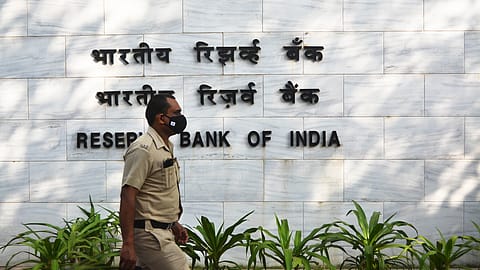Will RBI’s nod for M&A funding put Indian banks at the heart of a $40 billion deal rush?
Allowing Indian banks to finance mergers and acquisitions within the country could open opportunities in an industry valued at approximately $40 billion, or about ₹3.5 lakh crore.

The Reserve Bank of India (RBI) has implemented a significant policy change by permitting Indian banks to finance mergers and acquisitions (M&A) within the country.
According to a research note from Bank of Baroda’s Economic Research Department, “The RBI has approved allowing Indian banks to fund M&A activities within the country. This could open opportunities in an industry valued at approximately $40 billion, or about ₹3.5 lakh crore, according to market sources.”
Until now, Indian banks were not permitted to fund acquisitions directly. As the report explains, “In the existing dispensation relating to financing of acquisitions, Indian banks are not allowed to fund M&A activity. There has been a rationale for the same. First, banks face an asset-liability mismatch… Second, such loans are considered risky because the ability to service the debt depends on the success of the merger.”
This gap was filled by non-banking financial companies (NBFCs), foreign portfolio investors, and private equity funds.
The timing of this move is crucial because deal-making in India is already on the rise. The report cites Grant Thornton data showing that in July and August, a total of 18.4 billion has been registered, which is higher than in the first quarter. In 2024 alone, there were 683 deals worth $44.1 billion, with healthcare, renewables, technology, and financial services leading the way.
By giving banks a role in this space, the RBI is effectively expanding the available funding pool. As the note explains, “With this avenue opening for banks, there is an opportunity. Presently, growth in credit to large manufacturing is muted at 1.8%, while that to medium-sized enterprises is at 13.1%. There is scope for these numbers to improve as most of the M&A activity would involve the medium to large companies.”
This policy change is also connected to the RBI’s reversal of earlier restrictions. The report notes that, given the RBI has also rolled back the 2016 regulation on large exposures for banks, the scope to fund M&A involving large corporates opens up further. This means larger deals may now find it easier to secure financing from Indian lenders.
Recommended Stories
Overall, this move marks a new chapter for the banking sector. As the report stated, it clearly introduces a new dimension to banking in India, especially since this activity has previously been funded by non-banking sources. The success of this shift depends on how effectively banks manage the risks associated with financing high-stakes acquisitions.